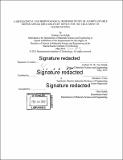| dc.contributor.advisor | Michael J. Cima. | en_US |
| dc.contributor.author | Van Schaik, Graham(Graham W.) | en_US |
| dc.contributor.other | Massachusetts Institute of Technology. Department of Materials Science and Engineering. | en_US |
| dc.date.accessioned | 2020-09-25T20:04:19Z | |
| dc.date.available | 2020-09-25T20:04:19Z | |
| dc.date.copyright | 2012 | en_US |
| dc.date.issued | 2012 | en_US |
| dc.identifier.uri | https://hdl.handle.net/1721.1/127718 | |
| dc.description | Thesis: S.B., Massachusetts Institute of Technology, Department of Materials Science and Engineering, 2012 | en_US |
| dc.description | Cataloged from the PDF of thesis. | en_US |
| dc.description | Includes bibliographical references (pages 40-42). | en_US |
| dc.description.abstract | Glioblastoma Multiform (GBM) and the more prevalent metastatic brain tumor are some of the most deadly forms of cancer, accounting for the death of nearly 14,000 individuals yearly. Previous treatment options for brain cancers include tumor resection, radiation, and chemo therapy but such options provide limited success in prolonging patients' life. Most patients experience tumor recurrence near the resected areas within a few months and are ineligible for additional rounds of chemotherapy due to systemic toxicity associated with many chemotherapeutic drugs. Advances in implantable drug delivery devices look promising, but can suffer from the possibility of biofouling, or loss of function due to a patient's own immune response. An implantable microcapsule device, designed to deliver locally chemotherapeutics in the brain, was developed by Alex Scott and Yoda Patta in the Cima Lab at the MIT Koch Institute for Integrative Cancer Research. | en_US |
| dc.description.abstract | The device passively delivers a payload of two common chemotherapeutics, Doxorubicin HCI or Temozolomide, and can be inserted post tumor resection to limit the possibility of tumor recurrence. In vivo implantation and sham surgeries using the device cap were performed on Sprague Sawley rats to assess an immune response and to look for potential biofouling 3, 7, 14, and 28 days post surgery. Immune response was quantified using a [mu]BCA assay for total protein concentration and an ELISA targeting Glial Fibrillary Acidic Protein (GFAP). Histology assays targeting 3 markers for new cell growth GFAP, NeuN, and CD68, were performed to determine relative location and prevalence of potential biofouling. Histological analysis offered little insight in the potential for biofouling near the implantation site as little fluorescence was seen for any markers. | en_US |
| dc.description.abstract | Fluorescence was slightly higher on the edge of the implantation wound site, but this may have been due to factors other than the increased presence of protein. ELISA and [mu]BCA analysis suggested that the immune response was activated and biofouling a possibility as total protein concentration was significantly higher 3 days post surgery than that seen at later time points (p < 0.05) and GFAP concentration for implantation groups remained elevated throughout the study. | en_US |
| dc.description.statementofresponsibility | by Graham Van Schaik. | en_US |
| dc.format.extent | 42 pages | en_US |
| dc.language.iso | eng | en_US |
| dc.publisher | Massachusetts Institute of Technology | en_US |
| dc.rights | MIT theses may be protected by copyright. Please reuse MIT thesis content according to the MIT Libraries Permissions Policy, which is available through the URL provided. | en_US |
| dc.rights.uri | http://dspace.mit.edu/handle/1721.1/7582 | en_US |
| dc.subject | Materials Science and Engineering. | en_US |
| dc.title | A histological and immunological response study of an implantable microcapsule drug delivery device for the treatment of glioblastoma | en_US |
| dc.type | Thesis | en_US |
| dc.description.degree | S.B. | en_US |
| dc.contributor.department | Massachusetts Institute of Technology. Department of Materials Science and Engineering | en_US |
| dc.identifier.oclc | 1196182649 | en_US |
| dc.description.collection | S.B. Massachusetts Institute of Technology, Department of Materials Science and Engineering | en_US |
| dspace.imported | 2020-09-25T20:04:18Z | en_US |
| mit.thesis.degree | Bachelor | en_US |
| mit.thesis.department | MatSci | en_US |
